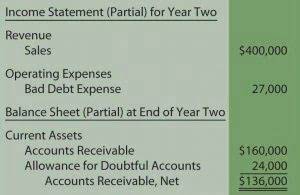Content

Further, the Trial Balance ensures that the information contained in your Ledger Accounts is accurate. Therefore, you can further use the accurate amounts showcased in your Trial Balance to prepare the financial statements. Capture important insights on the overall financial health of your company with this dynamic general ledger template with budget-comparison capabilities.

These transactions relate to an asset, a liability, an individual, or an expense. Let’s take an example to understand how you can transfer the journal entries to General Ledger. You need to record various business transactions in your books of accounts based on the dual aspect of accounting. Thus, as per the Duality Principle, each transaction involves a minimum of two accounts while recording into books. “As transactions in your business occur, they are noted in the general ledger under each account using double-entry accounting.
Policies & Reports
This is because you can easily verify if various accounting items are classified and recorded accurately with the help of the given information. You may choose to conduct an internal audit or get your accounts audited by an accounting professional. Therefore, General Ledger acts as an important financial record that is audited whatever may be the case.
The transactions are recorded in the general journal first, then the related accounts in the general journal will go to the general ledger. One important difference between a journal and a ledger is that the ledger is where double-entry bookkeeping takes place. This is why there are two sides gl account examples to a ledger, one for debits and one for credits. A ledger is where the most important information necessary to create financial statements is located. The general ledger is where the data from other ledgers (as well as any journals not accounted for in a ledger to this point) is added.
What is a General Ledger (GL)?
A general ledger is an accounting record of all financial transactions in your business. This includes debits (money leaving your business) and credits (money coming into your business). These transactions can occur across areas such as revenue, expenses, assets and liabilities. A general ledger uses the double-entry accounting method for generating financial statements. This method records the debits and credits for each transaction, which should always balance out.
For example, you identified that a payment of $1,000 to your vendor William Paper Mill was wrongly recorded as $100. Now, the best practice of recording a correct entry is to reverse the original entry and then record a new entry with the correct amount. Suppose you discover after reconciliation that certain amounts were not correctly recorded in your Ledger. It could be an entry with an incorrect amount or an entry you completely omitted to record in your General Ledger Accounts. Under this step, you need to check the amounts recorded in each transaction forming part of your General Ledger. So,you will have to keep your source documents handy if you are preparing your General Ledger Accounts manually.
GL Month End Closing
General Ledger refers to a record containing individual accounts showcasing the transactions related to each of such accounts. It is a group or collection of accounts that give you information regarding the detailed transactions with respect to each of such accounts. For more small business budgeting and balance sheet resources, see our list of downloadable small business balance sheet templates. For example, cash and account receivables are part of the company’s assets. If your business doesn’t make enough purchases to warrant keeping them in its own ledger, you can include them in your general ledger.
- For instance, the ledger folder could have a cash notebook, accounts receivable notebook, and notes receivable notebooks in it.
- Thus, each transaction of your business takes place in such a way that this equality between the two sides of the accounting equation is always maintained.
- The stockholder’s equity refers to the excess of assets over liabilities of your business.
- A business’ financial transactions are first recorded in a general journal.
- Any accounts not in these ledgers such as asset, liability, and capital accounts remain in the general ledger.
- Instead, they show actual amounts spent or received and not merely projected in a budget.
- Therefore, a General Ledger helps you to know the ultimate result of all the transactions that take place with regards to specific accounts on a given date.




